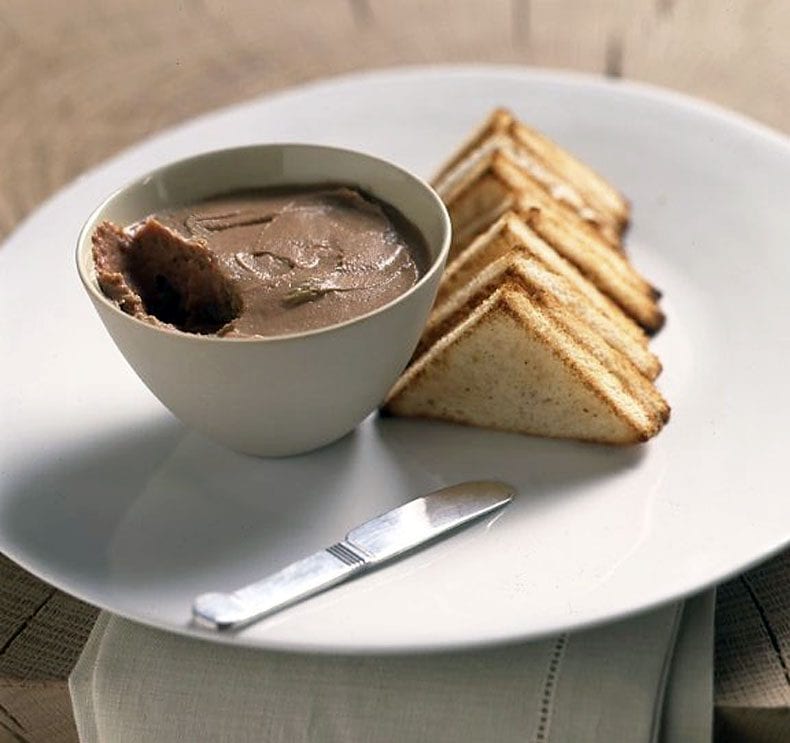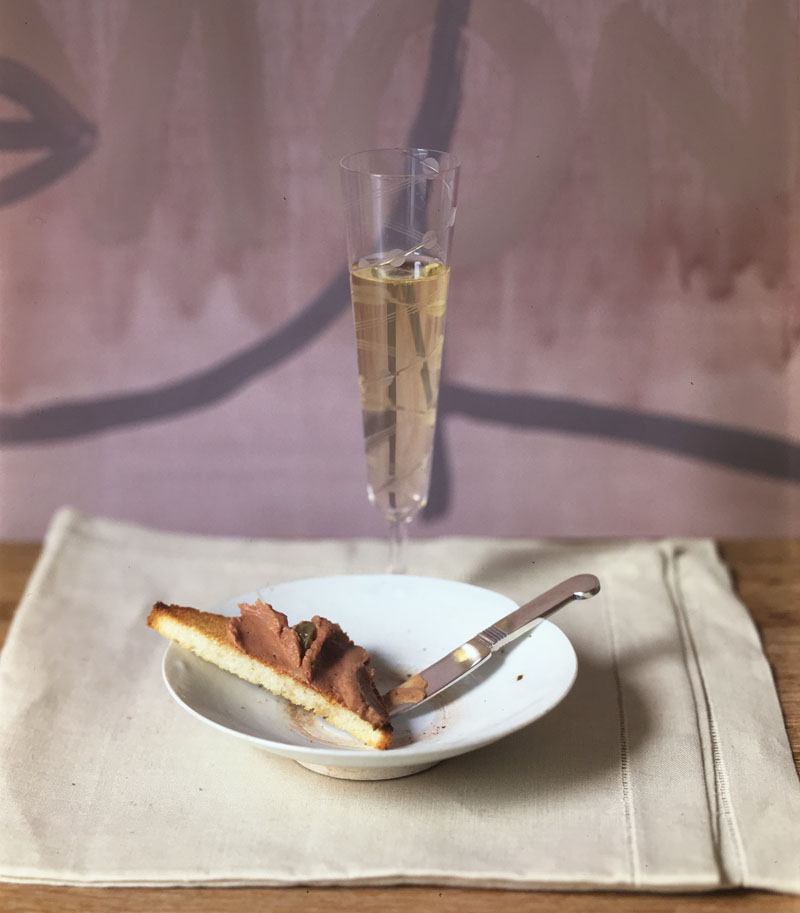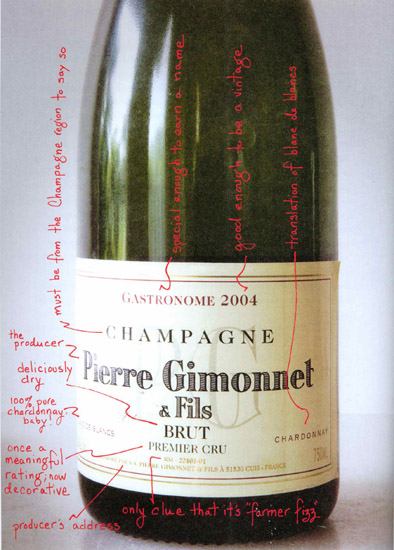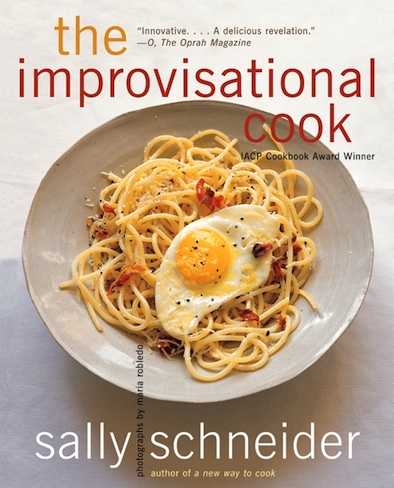Many years ago I worked as a pate chef making all manner of charcuterie from pates and mousses to elaborate layered terrines and sausages. They were rooted in classic French cooking and the joyous culture that embraced rich foods wholeheartedly. To this day my Chicken Liver Pate, deeply enriched with butter, cream and cognac, is gobbled with delight by friends who come to dinner, a divine and satisfying appetizer or hors d’oeuvre that I love because it is easy, can be made ahead, and never fails to dazzle.
Somewhere along the line, I wondered if I could make the pate without the quantities of fat traditionally employed, yet achieve the same luxurious effect. Unsweetened chestnut puree proved to be a fine replacement for the usual rich fats. Although it may seem a rather radical approach, the flavor of chestnuts is quite neutral and, like fat, it has an extremely fine texture.
I discovered that I could use it to replace fat in savory mousses, ounce for ounce, without substantially altering the other ingredients. (It also works in mousselike chocolate confections.) I applied the approach to a recipe I used to make by the legendary French chef Michel Guerard: Duck Liver Mousse with White Raisins. The luxuriously silky mousse contained 6 ounces of fatback, 1 cup of creme fraiche and 4 egg yolks for 8 servings, about 280 calories per serving in fat alone.
I substitute chestnut puree for most of the fat to achieve nearly the same rich texture and marvelous flavors of the original. The savings is about 235 calories in fat per serving. My lean version has a fine, rich texture, and much of the marvelous flavors of the original.
I offer both recipes, in time for holiday partying.

Classic Chicken Liver Pate
Makes about 2 ½ cups; Serves 8 to 10
1 pint fresh chicken livers (about 1 pound or 2 cups)
8 tablespoons unsalted butter
½ cup finely chopped shallots
2 teaspoons fresh thyme leaves, finely chopped
½ cup Madeira, port or dry Marsala
1 to 2 tablespoons Cognac or Armagnac plus additional to taste
3 tablespoons heavy cream, plus more as needed
Salt to taste
Freshly ground white pepper
Pat the chicken livers dry with paper towels, cut them into 1” pieces, removing any sinew or connective tissue as you go.
Place a large heavy saute pan over medium heat and melt 2 to 3 tablespoons of the butter. When it foams, add the shallots and saute until very soft and golden brown. Turn up the heat and add the thyme, livers, Madeira and Cognac. (If the mixture ignites let the flames burn off.) Cook, stirring and tossing the livers in the pan until the wine are reduced and syrupy and the livers are brown on the outside with slightly pink interiors, about 5 minutes.
Tip the mixture into the work bowl of a food processor. Add the cream and remaining butter. Puree,letting the processor run several minutes until the mixture is very smooth.
Taste and season to taste with pepper and additional salt. Drizzle in just enough Cognac to perfume it, without making it alcoholic.
For an exquisitely smooth pate, pour the mixture through a strainer, using a rubber spatula to help push the mixture through. If you’re in a hurry, omit this step.
Pack the pate into a bowl or several small ramekins. Smooth the top and cover with plastic wrap. Refrigerate until firm, about two hours, before eating.
The pate will keep refrigerated about 5 days.
…
Duck or Chicken Liver Terrine with White Raisins after Michel Guerard
Canned unsweetened chestnut puree imported from France is available at gourmet markets and via Amazon. Check the ingredients to see that it only includes chestnuts and water; no sweetening whatsoever. If you can only find whole peeled chestnuts, follow the method at bottom for transforming it into a puree.
Makes about 2 1/2 cups, 8 to 10 servings
You can double the recipe if you wish. However, the pâté must not be more than 2 inches deep, or it won’t cook properly.
1 1/4 teaspoons unflavored gelatin
3/4 cup less 1 tablespoon milk
1/4 cup golden raisins
Boiling water
2/3 pound duck or chicken livers
7 ounces (3/4 cup) unsweetened chestnut puree*
1 1/2 teaspoons salt
1 1/2 teaspoons freshly ground pepper
Pinch allspice
4 egg yolks
2 tablespoons plus 2 teaspoons Armagnac or Cognac
Preheat the oven to 300′.
In a small saucepan, sprinkle the gelatin over 1/4 cup of the milk; set aside to soften.
Place the raisins in a small bowl and pour boiling water over to cover. Let soften 5 minutes. Drain well and pat dry on paper towels.
Pat the chicken livers dry with paper towels, cut them into 1” pieces, removing any sinew or connective tissue as you go.
In a food processor, process the chestnut puree, livers, salt, pepper and allspice until the mixture is creamy. Add the egg yolks and Armagnac and process to combine.
Over low heat, heat the milk mixture until the gelatin is dissolved. Stir in the remaining milk; add to the liver mixture. Process at least one minute until perfectly smooth. Pour the mixture through a fine strainer set over a bowl, rubbing and stirring with a rubber spatula to force it through the strainer, catching the filaments in the strainer. Stir in the raisins.
Pour the mousse into a 1-quart baking dish. Place the dish in a larger pan and set on the rack of the oven. Add enough boiling water to the pan to come halfway up the sides of the baking dish. Cover lightly with a piece of aluminum foil.
Bake until the custard is set and a thermometer inserted into the center of it reads 135’, about 50 to 55 minutes. Remove the dish from the water bath and allow to cool completely at room temperature. Cover with plastic wrap and refrigerate overnight. If you wish, you can pack the mousse into smaller ramekins for individual servings. Serve the mousse cold on thin slices of toast.
Because the mousse has little fat, it will darken when exposed too long to the air. To prevent this, press plastic wrap gently directly against the top or cover the top with melted clarified butter and chill. The butter will harden and can be removed easily just before serving.
The mouse will keep refrigerated for about 4 days.
…
Chestnut Puree
If you cannot find commercial chestnut puree, it is easy to make your own using peeled vacuum packed bottled chestnuts or frozen peeled chestnuts.
Makes a scant 2 cups puree
Combine 1 pound vacuum packed or frozen or fresh peeled chestnuts and 1 cup water in a medium saucepan. Bring to a simmer over moderate heat, cover and simmer 25 minutes stirring occasionally until the chestnuts are puree tender. Drain the chestnuts well, reserving about 1/2 cup of the cooking water. Puree the chestnuts in a food processor, stopping frequently to scrape down the sides of the work bowl, until they are reduced to a stiff, rather dry puree. If necessary, add a little of the cooking water to loosen the puree. Pack into a bowl and press plastic wrap directly against the puree to prevent it from discoloring.
Refrigerate up to 4 days or freeze up to 2 months.





Sounds (and looks) very appetizing , Sally!
I wonder whether it is possible to use the same recipe with beef liver? Or does anything else need changing in the recipe?
Thanks!
I’m sure it would technically work by just swapping the beef liver for the chicken or duck. However, I haven’t worked with beef liver for pates, only pork, which is another classic ingredient. Beef liver has a stronger flavor so I would do two things:
one, soak it in milk for several hours, even a day ahead, to attenuate any bitterness or strong flavors
AND TWO, adjust the seasonings as necessary when tasting the pureed mixture. For example, you may want to add a bit more alcohol, salt, pepper, etc. Additional butter and/or cream will also help to soften the flavor if necessary.
If you try it, let me know how it cam out.
Thanks Sally.
I’m going to try the Classic Chicken Liver Pate,
this weekend.
I love the idea of ‘slow cooking’,
…albeit, noodles and broth and oreos are my mainstay.
This weekend,..
diet and all(!):
Chicken Liver Pate!
Hello Sally. I just love liver. You either do or you don’t. It’s getting difficult to find in grocery stores, or maybe just where I live in north western Florida. My question is: can I freeze this? I would like to make up a big batch and pack in small containers and keep in the freezer. What do you think? Thanks for all you do.
Hi Vaughan, You can definitely freeze the Classic Pate as it has a good amount of fat. I’ve usually have a store in the freezer. The second one is more fragile, since it is basically a custard, with minimal fat; most likely it will get grainy or watery when it’s structure breaks upon thawing.
Thanks for your note.